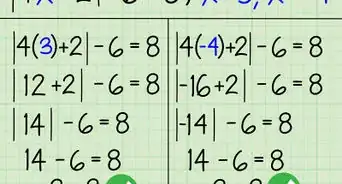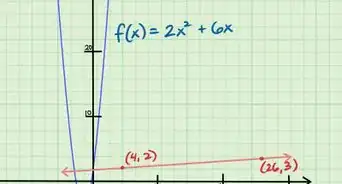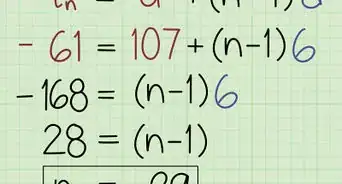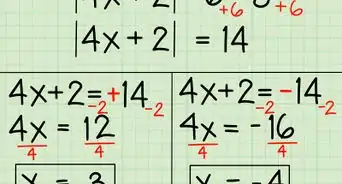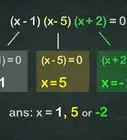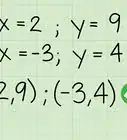This article was co-authored by David Jia. David Jia is an Academic Tutor and the Founder of LA Math Tutoring, a private tutoring company based in Los Angeles, California. With over 10 years of teaching experience, David works with students of all ages and grades in various subjects, as well as college admissions counseling and test preparation for the SAT, ACT, ISEE, and more. After attaining a perfect 800 math score and a 690 English score on the SAT, David was awarded the Dickinson Scholarship from the University of Miami, where he graduated with a Bachelor’s degree in Business Administration. Additionally, David has worked as an instructor for online videos for textbook companies such as Larson Texts, Big Ideas Learning, and Big Ideas Math.
There are 10 references cited in this article, which can be found at the bottom of the page.
This article has been viewed 413,980 times.
In algebra, binomials are two-term expressions connected with a plus sign or minus sign, such as . The first term always includes a variable, while the second term may or may not. Factoring a binomial means finding simpler terms that, when multiplied together, produce that binomial expression, which helps you solve it or simplify it for further work.
Steps
Factoring Binomials
-
1Review the basics of factoring. Factoring is when you break a large number down into it's simplest divisible parts. Each one of these parts is called a "factor." So, for example, the number 6 can be evenly divided by four different numbers: 1, 2, 3, and 6. Thus, the factors of 6 are 1, 2, 3, and 6.[1]
- The factors of 32 are 1, 2, 4, 8, 16, and 32
- Both "1" and the number you're factoring are always factors. So, the factors of a small number, like 3, would simply be 1 and 3.
- Factors are only the perfectly divisible numbers, or "whole" numbers. You could divide 32 by 3.564, or 21.4952, but this won't lead to a factor, just another decimal.
-
2Place the binomial's terms in order to make them easier to read. A binomial is simply the addition or subtraction of two numbers, at least one of which contains a variable. Sometimes these variables have exponents, like or . When first factoring binomials, it can help to reorder equations with ascending variable terms, meaning the biggest exponent is last. For example:[2]
- →
- →
-
→
- Note how the negative sign stays in front of the 2. If a term is subtracted, just keep the negative in front of it.
Advertisement -
3Find the greatest common factor of both terms. This means you find the highest possible number that both parts of the binomial are divisible by.[3] If you're struggling, simply factor both numbers on their own, then see what the highest matching number is. For example:[4]
-
Practice Problem:.
- Factors of 3: 1, 3
- Factors of 6: 1, 2, 3, 6.
- The greatest common factor is 3.
-
Practice Problem:.
-
4Divide the greatest common factor from each term. Once you know your common factor, you need to remove it from each term.[5] Note, however, that you're simply breaking the terms down, turning each term into a small division problem. If you did it right, both equations will share your factor:[6]
- Practice Problem:.
- Find greatest common factor: 3
- Remove factor from both terms:
-
5Multiply your factor by the resulting expression to finish. In the last problem, you removed a 3 to get . But you weren't just getting rid of the three entirely, simply factoring it out to simplify things. You can't just erase numbers without putting them back! Multiply your factor by the expression to finally finish. For example:[7]
- Practice Problem:
- Find greatest common factor: 3
- Remove factor from both terms:
- Multiple factor by new expression:
- Final Factored Answer:
-
6Check your work by multiplying it all back out to the original equation. If you did everything correctly, checking that you got it right should be easy. Simply multiply your factor by both individual parts in the parenthesis. If it matches the original, unfactored binomial then you did it all correctly. From start to finish, solve the expression to practice:[8]
- Reorganize terms:
- Find greatest common denominator:
- Remove factor from both terms:
- Multiple factor by new expression:
- Check Answer:
Factoring Binomials to Solve Equations
-
1Use factoring to simplify equations and make them easier to solve. When solving an equation with binomials, especially complex binomials, it can seem like there is no way everything will match. For example, try to solve . One way to solve it, especially with exponents, is to factor first.[9]
- Practice Problem:
- Remember that binomials must only have two terms. If there are more than two terms you can learn to solve polynomials instead.
-
2Add and subtract so that one side of the equation is equal to zero. This whole strategy relies on one of the most basic facts of math: anything multiplied by zero must equal zero. So if you equation equals zero, then one of your factored terms must equal zero! To get started, add and subtract so one side equals zero.[10]
- Practice Problem:
-
Set to Zero:
-
3Factor the non-zero side just like normal. At this point, you can pretend the other side doesn't exist for a step. Just find the greatest common factor, divided it out, and then create your factored expression.[11]
- Practice Problem:
- Set to Zero:
- Factor:
-
4Set both inside and outside the parenthesis as equal to zero. In the practice problem you are multiplying 2y by 4 - y, and it must equal zero. Since anything multiplied by zero equals zero, this means either 2y or 4 - y must be 0. Create two separate equations to figure out what y must be for either side to equal zero.
- Practice Problem:
- Set to Zero:
- Factor:
-
Set both parts to 0:
-
5Solve both equations for zero to get your final answer or answers. You might have one answer, or more than one. Remember, only one side has to equal zero, so you might get a few different values of y that solve the same equation.[12] For the end of the practice problem:
-
- y = 0
-
- y = 4
-
-
6Plug your answers back in to ensure that they work. If you got the right values for y then you should be able to use them to solve the equation. It is simple as trying each value of y in place of the variable, as shown. Since the answer were y = 0 and y = 4:
-
- This answer is correct
-
- This answer is also correct.
-
Handling Trickier Problems
-
1Remember that variables also count as factors, even with exponents. Remember, factoring is finding out what numbers can divide into the whole. The expression is another way of saying . This means you can factor out each x if the other term has one as well. Treat variables no different from a normal number. For example:
- can be factored, because both terms contain a t. Your final answer would be
- You can even pull out multiple variables at once. For example, in both terms contain the same . You can factor to
-
2Recognize unsimplified binomials by combining like terms. Take, for example, the expression . This may seem like it has four terms, but look closely and you'll realize there are really only two. You can add like terms, and since both the 6 and 14 have no variable, and the 2x and 3x share the same variable, these can both be combined. Factoring is then easy:[13]
- Original Problem:
- Reorganize terms:
- Combine like terms:
- Find greatest common factor:
- Factor:
-
3Recognize the special "difference of perfect squares." A perfect square is a number whose square root is a whole number, like , , or even If your binomial is a subtraction problem with two perfect squares, like , you can simply plug them into this formula:[14]
- Difference of perfect squares formula:
- Practice Problem:
-
Find square roots:
- Plug squares into formula:
-
4Learn to breakdown the "difference of perfect cubes." Just like the perfect squares, this is a simple formula for when you have two cubed terms subtracted by each other. For example, . Just like before, you simply find the cubed root of each, plugging them into a formula:[15]
- Difference of perfect cubes formula:
- Practice Problem:
-
Find cubed roots:
- Plug cubes into formula: [16]
-
5Know that the sum of perfect cubes also fits in a formula. Unlike the difference of perfect squares, you can easily find added cubes too, like , with a simple formula. It's almost the exact same as above, just with some pluses and minuses flipped. The formula is just as easy as the other two, and all you have to do is recognize the two cubes in the problem to use it:[17]
- Sum of perfect cubes formula:
- Practice Problem:
-
Find cubed roots:
- Plug cubes into formula: [18]
Community Q&A
-
QuestionWhat if the variable has no coefficient? Or the two numbers share 1 as the greatest common factor?
 DonaganTop AnswererSome binomials simply cannot be factored.
DonaganTop AnswererSome binomials simply cannot be factored. -
Question2x to the 2 power minus 8 factored is 2(x-2)(x+2) in my text book. But I'm confused because (x-2)(x+2) becomes x to the second power minus 4
 Community AnswerThis is because you can actually factor twice. X squared minus four is a difference of perfect squares, meaning you can factor it to (x-2)(x+2). The 2 in front is from the first factoring.
Community AnswerThis is because you can actually factor twice. X squared minus four is a difference of perfect squares, meaning you can factor it to (x-2)(x+2). The 2 in front is from the first factoring. -
QuestionWhat if one term has the same coefficient, but no exponent?
 DonaganTop AnswererFactor out the coefficient.
DonaganTop AnswererFactor out the coefficient.
Warnings
- A binomial that’s the sum of perfect squares can’t be factored.⧼thumbs_response⧽
References
- ↑ https://courses.lumenlearning.com/waymakercollegealgebra/chapter/factoring-basics/
- ↑ https://www.wtamu.edu/academic/anns/mps/math/mathlab/col_algebra/col_alg_tut7_factor.htm
- ↑ David Jia. Academic Tutor. Expert Interview. 23 February 2021
- ↑ https://www.wtamu.edu/academic/anns/mps/math/mathlab/int_algebra/int_alg_tut27_gcf.htm
- ↑ David Jia. Academic Tutor. Expert Interview. 23 February 2021
- ↑ https://www.wtamu.edu/academic/anns/mps/math/mathlab/int_algebra/int_alg_tut27_gcf.htm
- ↑ https://www.mathsisfun.com/algebra/polynomials-multiplying.html
- ↑ https://www.mathsisfun.com/algebra/polynomials-multiplying.html
- ↑ https://math.libretexts.org/Courses/Monroe_Community_College/MTH_165_College_Algebra_MTH_175_Precalculus/01%3A_Equations_and_Inequalities/1.01%3A_Solve_Polynomial_Equations_by_Factoring
- ↑ https://www.khanacademy.org/math/algebra/x2f8bb11595b61c86:quadratic-functions-equations/x2f8bb11595b61c86:quadratics-solve-factoring/a/solving-quadratic-equations-by-factoring
- ↑ https://math.libretexts.org/Courses/Monroe_Community_College/MTH_165_College_Algebra_MTH_175_Precalculus/01%3A_Equations_and_Inequalities/1.01%3A_Solve_Polynomial_Equations_by_Factoring
- ↑ https://www.khanacademy.org/math/algebra/x2f8bb11595b61c86:quadratic-functions-equations/x2f8bb11595b61c86:quadratics-solve-factoring/a/solving-quadratic-equations-by-factoring
- ↑ https://math.libretexts.org/Courses/Borough_of_Manhattan_Community_College/MAT_206_Precalculus/10%3A_Appendix/10.2_Polynomial_and_Radical_Expressions
- ↑ https://math.libretexts.org/Courses/Borough_of_Manhattan_Community_College/MAT_206_Precalculus/10%3A_Appendix/10.2_Polynomial_and_Radical_Expressions
- ↑ https://mathbitsnotebook.com/Algebra2/Polynomials/POCubeFactoring.html
- ↑ http://www.purplemath.com/modules/specfact2.htm
- ↑ https://mathbitsnotebook.com/Algebra2/Polynomials/POCubeFactoring.html
- ↑ http://www.purplemath.com/modules/specfact2.htm
About This Article
To factor binomials, start by placing the binomial's terms in ascending order to make them easier to read. Next, find the greatest common factor of both terms, then divide the greatest common factor from each term. Then, finish by multiplying your factor by the resulting expression! If you want to check your work, multiply it all back out to the original equation. To learn how to factor binomials to solve equations and trickier problems, read on!

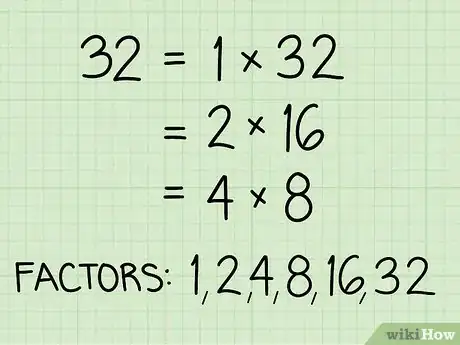









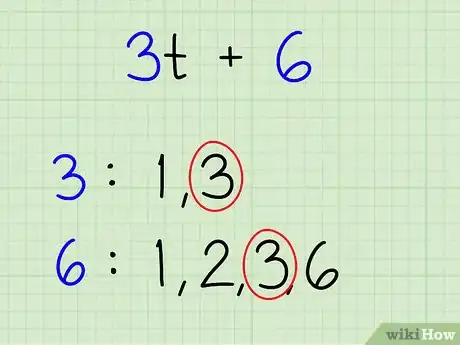

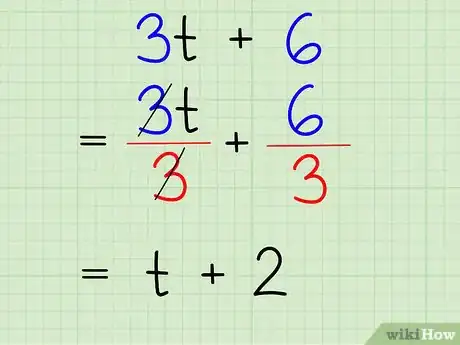

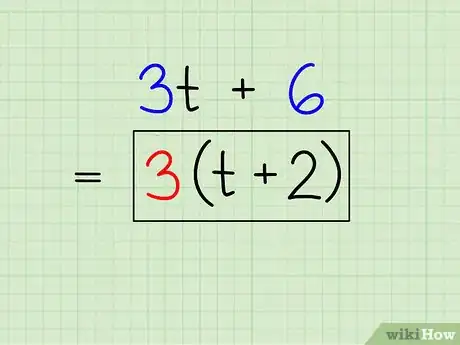









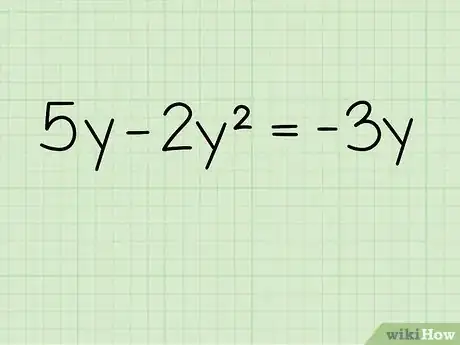




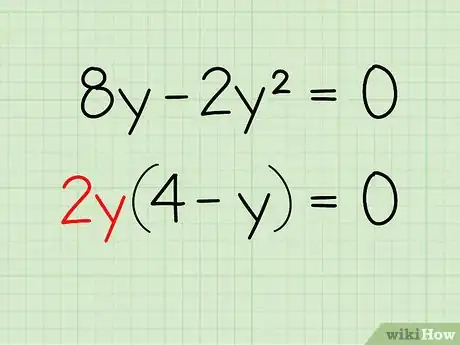

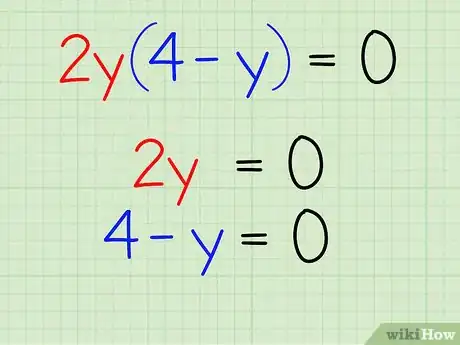













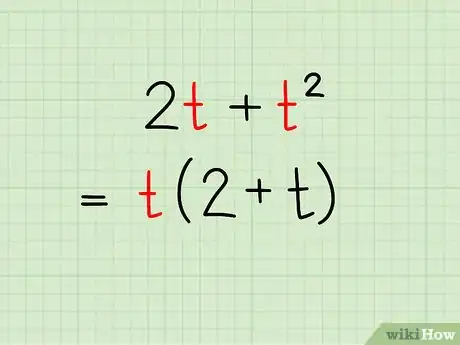



























![{\sqrt[ {3}]{8x^{3}}}=2x](./images/2122260483-77ed49f7f0ab2dfb9de3438ac123641fb683a0a0.webp)
![{\sqrt[ {3}]{27}}=3](./images/2097487987-ca5392df17ff31f62e3cae649d51dd36bde856ce.webp)








